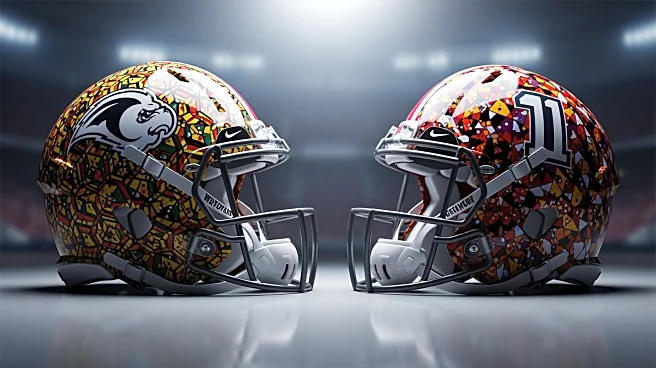What's Happening?
A recent analysis by Seth Stephens-Davidowitz, an American data scientist and economist, suggests that the golf industry may be misdirecting its efforts to expand its fan base. The study, which examined
Facebook fan data, found a strong correlation between witnessing athletic success during boyhood and developing a lifelong passion for sports. Specifically, championships experienced by boys aged eight to twelve were most likely to foster intense fandom. This insight challenges the current industry focus on marketing to teenagers and young adults, suggesting that efforts might be better directed at younger children. The analysis also noted that young girls' sports allegiances are less influenced by team success, indicating a different approach may be needed for engaging female fans.
Why It's Important?
The findings have significant implications for the golf industry, which has been striving to 'grow the game' by targeting older demographics. The analysis suggests that these efforts may be less effective than anticipated, as the most impressionable years for developing sports fandom occur before the age of 14. This insight could lead to a strategic shift in marketing and youth engagement programs, potentially increasing participation and viewership in the long term. By focusing on younger audiences, golf could enhance its appeal and secure a more robust fan base, similar to more popular sports like soccer and basketball.
What's Next?
The golf industry may need to reconsider its youth engagement strategies, potentially increasing investment in programs aimed at younger children. Initiatives like the USGA's U.S. National Development Team could play a crucial role in this shift. Additionally, professional golf might benefit from creating more high-stakes moments involving top talents to captivate young audiences. However, the challenge remains in balancing the creation of star athletes and memorable events without diluting the sport's authenticity.
Beyond the Headlines
The analysis highlights a broader issue within sports marketing: the undervaluation of pre-teen audiences. This could prompt other sports leagues to reevaluate their strategies, potentially leading to a more inclusive approach that considers the unique developmental stages of young fans. Moreover, the findings underscore the importance of understanding gender differences in sports fandom, which could lead to more tailored and effective engagement strategies.











